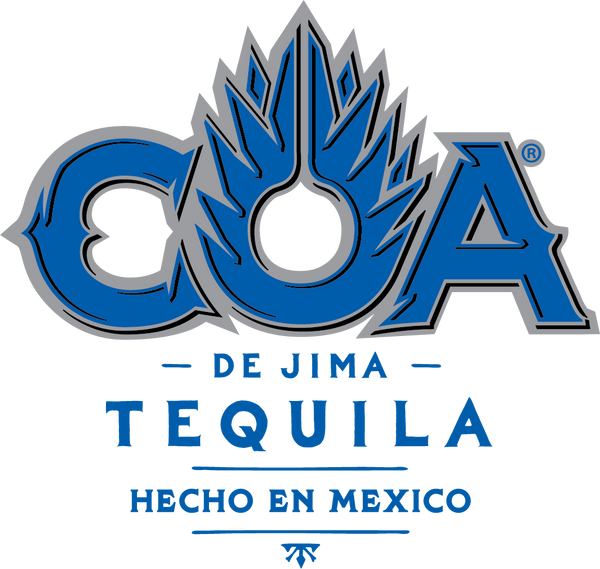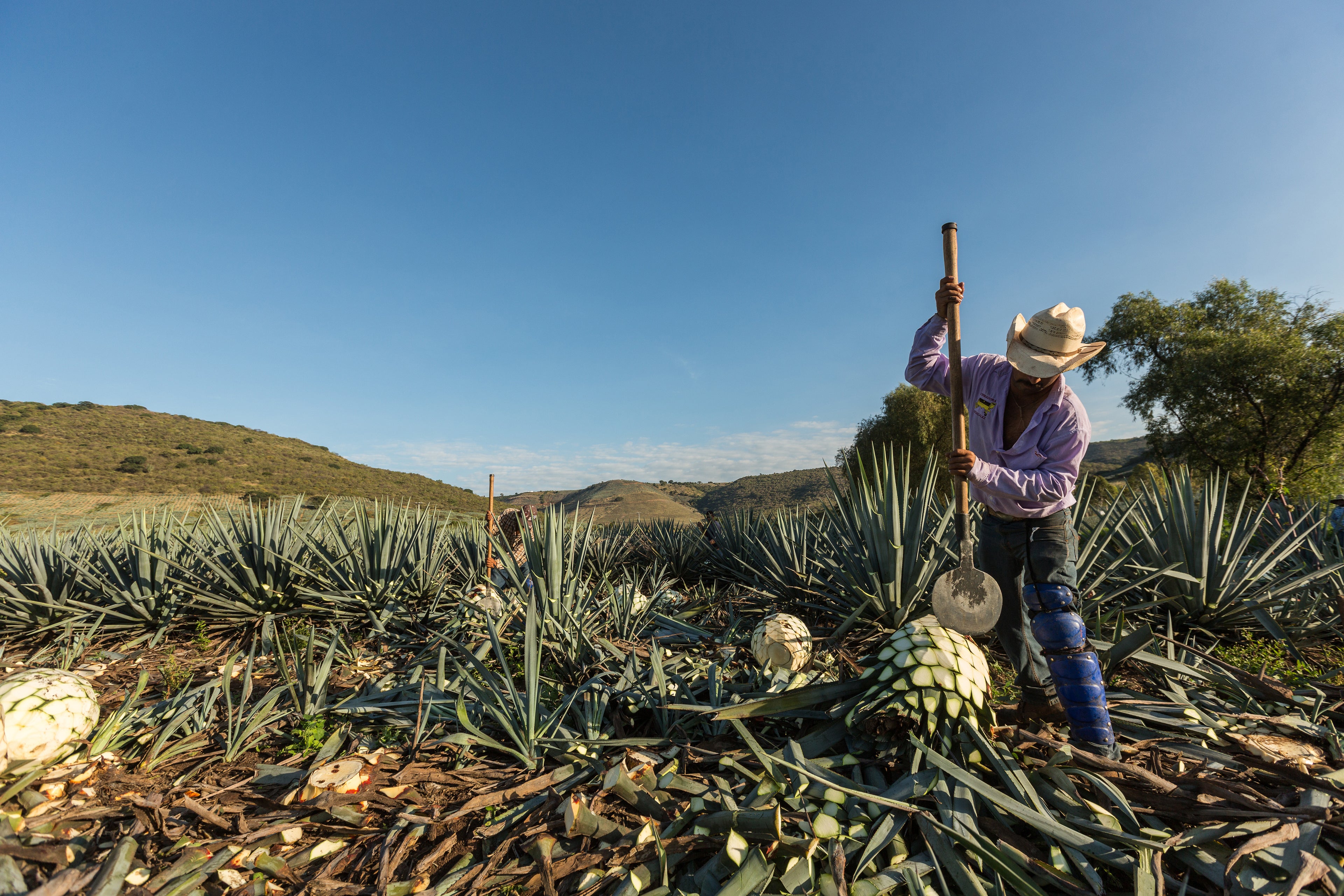
The Process
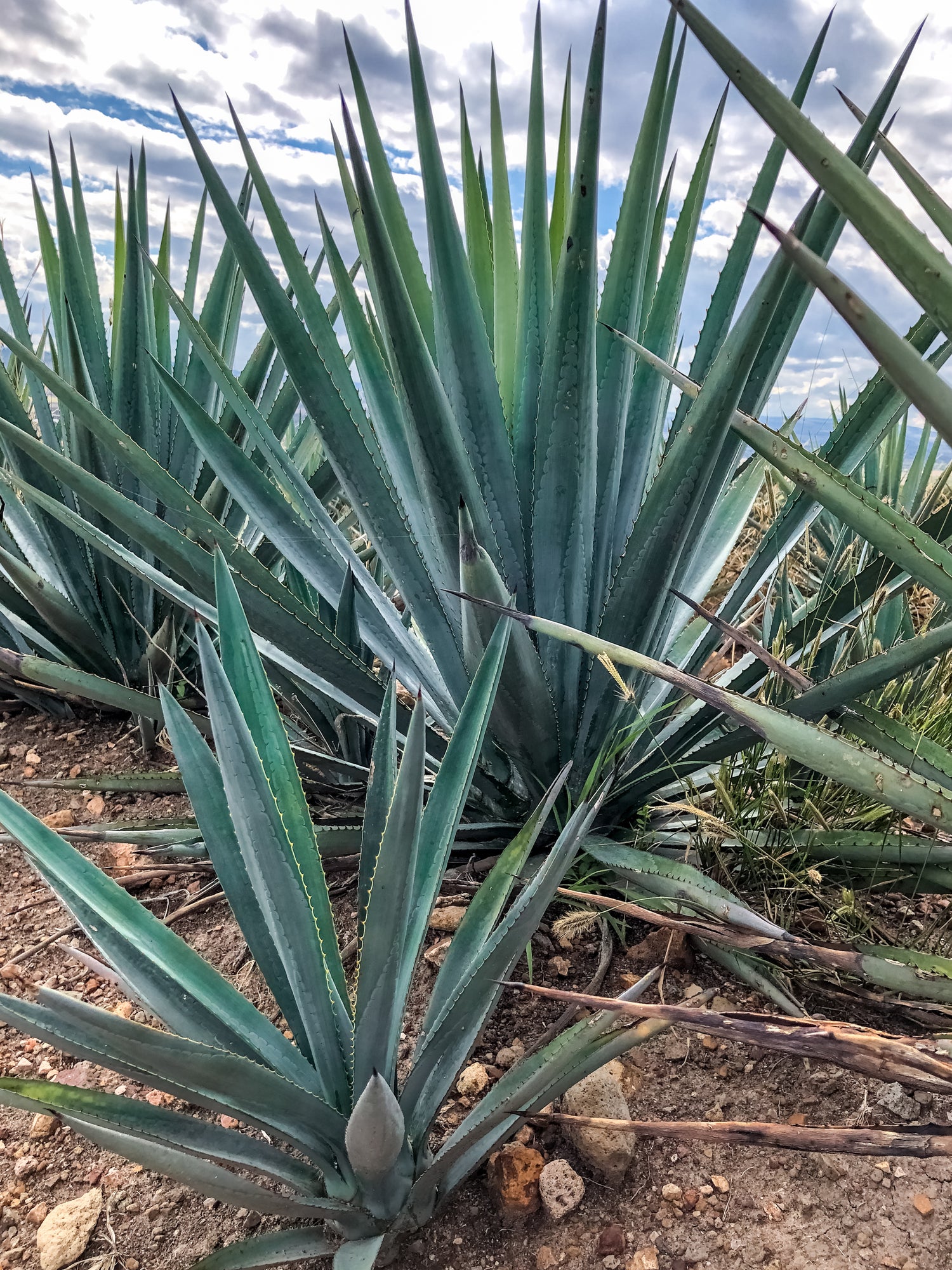
COA de Jima's origin lies in the cultivation of the Weber Blue Agave plant. This specific variety is preferred for its high sugar content, which is essential for fermentation.
Blue agave plants take between 6 to 12 years to mature enough for harvesting. During this time, they are carefully tended by our skilled and passionate jimadors to ensure optimal growth. The maturity of agave is crucial as it affects the sugar content, which in turn influences the quality and flavor of the tequila.
Similar to a vineyard, this agave field demands continuous and meticulous care, a testament to the dedication required in the art of farming agave.

The harvesting of agaves is a traditional and labor-intensive process that requires expertise and precision. Jimadors use their experience to judge the perfect time for harvest, as the sugar content, crucial for fermentation, peaks at maturity.
The jimador uses a specialized tool called a "Coa de Jima," which is specifically designed for cutting agave plants, to trim away the outer leaves of the agave plant and expose the core of the plant.
Mature agaves can weigh anywhere between 40lbs and 70lbs, and a skilled jimador can harvest more than 1500lbs of agaves by hand every day.
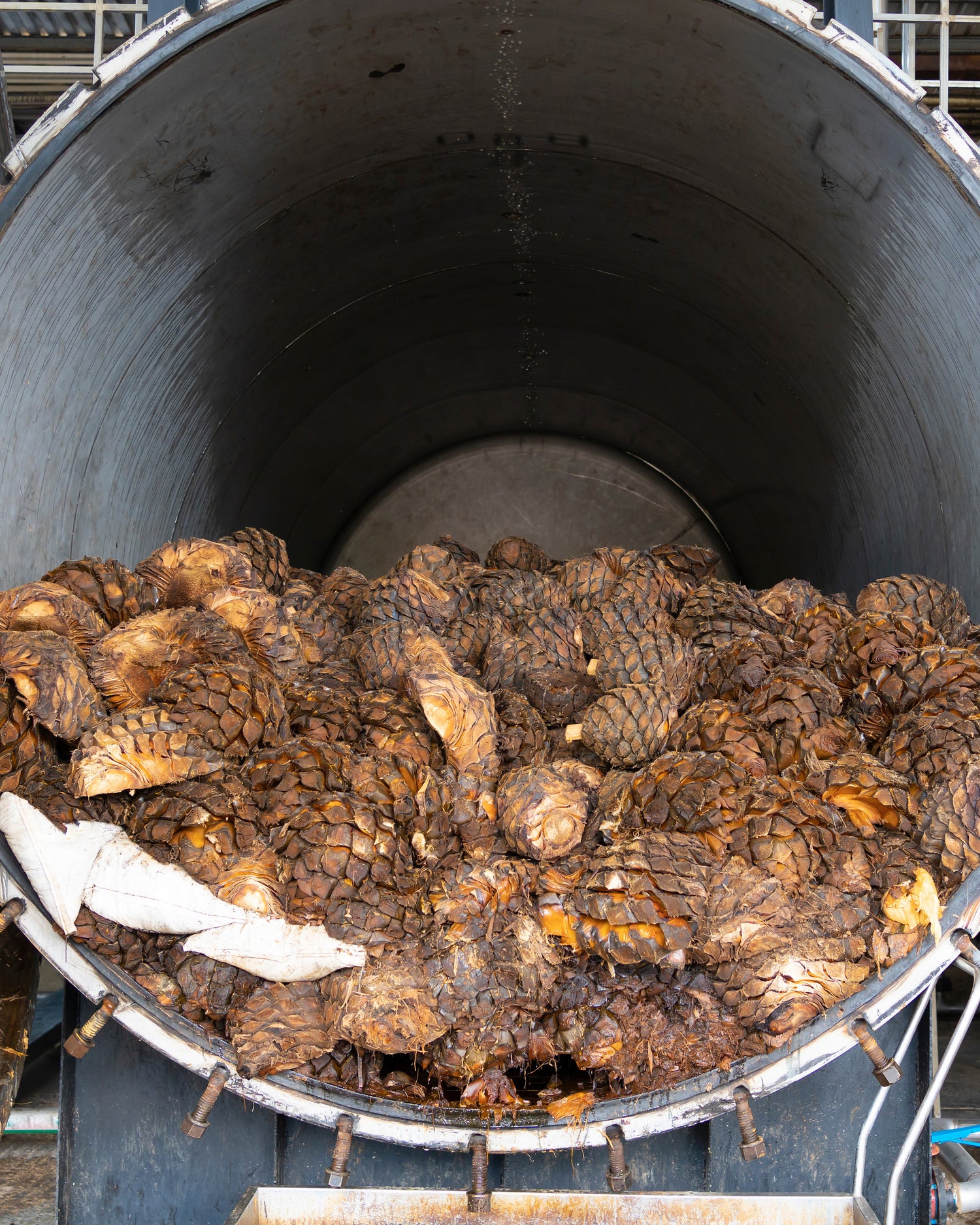
The cooking of agaves is an essential phase in the production of tequila, serving a dual purpose. Firstly, it transforms the agave's natural components into fermentable sugars, crucial for the distillation process. Secondly, this step is pivotal in developing the tequila's distinctive flavor profile.
In modern practices, the harvested agaves are typically placed in an autoclave, a high-pressure cooker, where they are cooked for 7-8 hours.
This controlled cooking environment not only ensures the efficient conversion of sugars but also contributes to the creation of the tequila's complex flavor palette, with rich notes of caramel, vanilla, and spices.
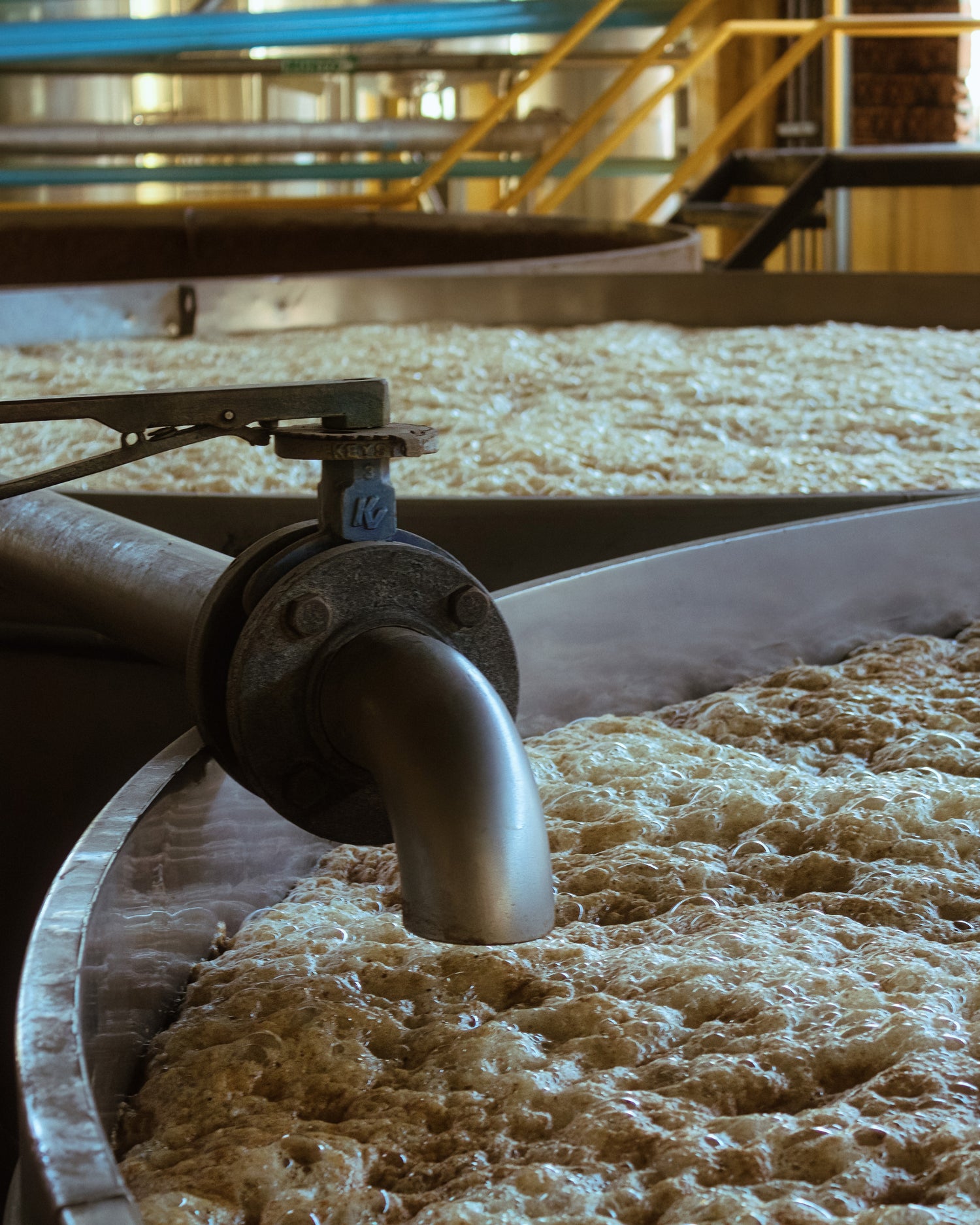
The fermentation and distillation processes are where the art and science of tequila-making truly come together.
After cooking, the agave piñas are crushed to extract the sugary juice, known as 'aguamiel' or 'mosto'.
During fermentation, yeast converts the natural sugars into alcohol. Coa de Jima fermentation is unique from the method most distilleries use because we use our own yeast strain rather than commercial yeast during this phase.
During fermentation, not only is alcohol produced, but various flavor compounds are also formed. These compounds contribute to the unique taste and aroma of the tequila.
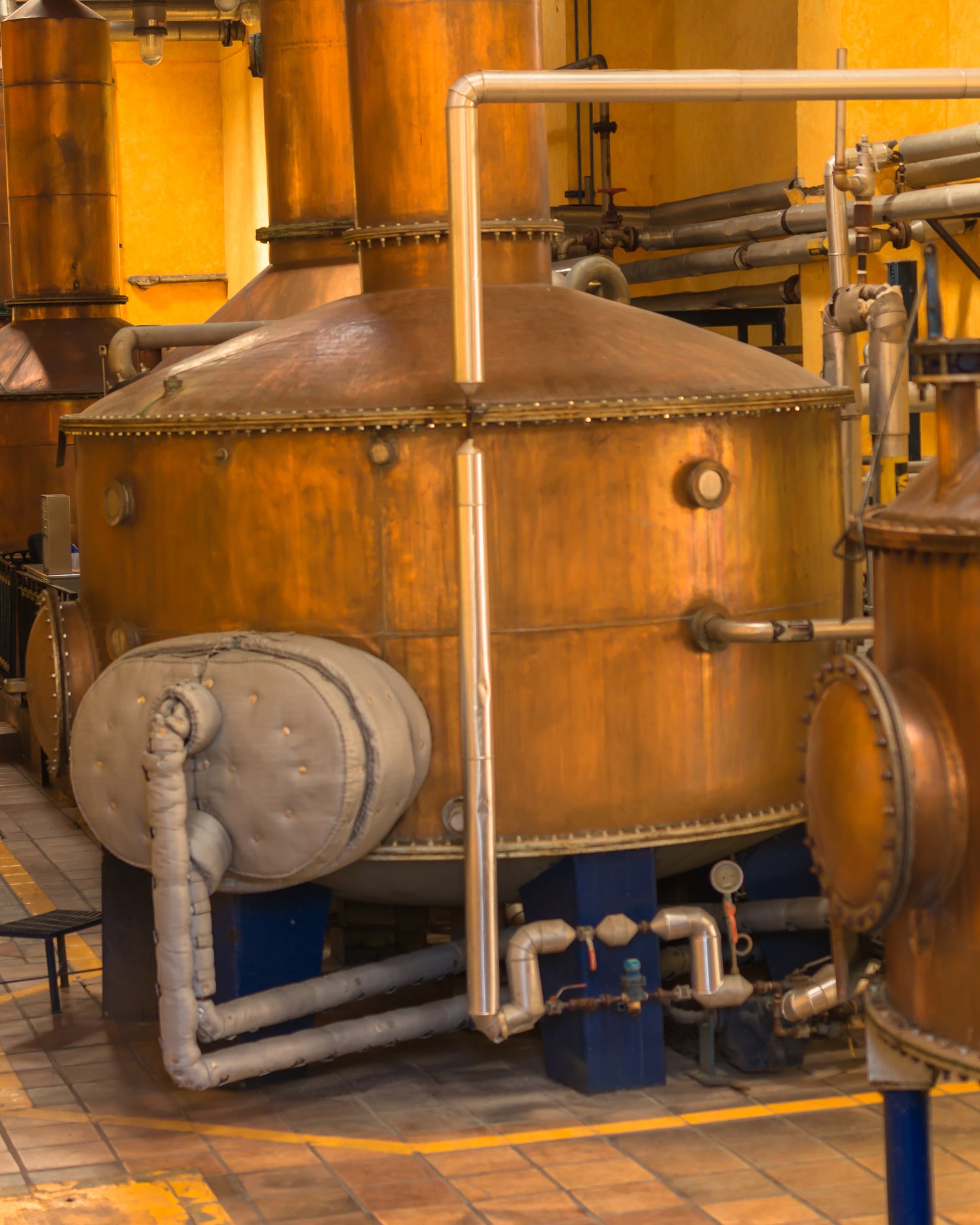
The fermented liquid is called tepache and is then distilled to separate the alcohol from the water, yeast and other solids and produces a product called ordinario which has a lower alcohol content.
The ordinario is then distilled for a second time to increase the alcohol content and purify the product. The second distillation is where the master distiller has significant control over the flavor and quality of the tequila.
The second distillation produces the final, clear spirit which is blanco or silver tequila.
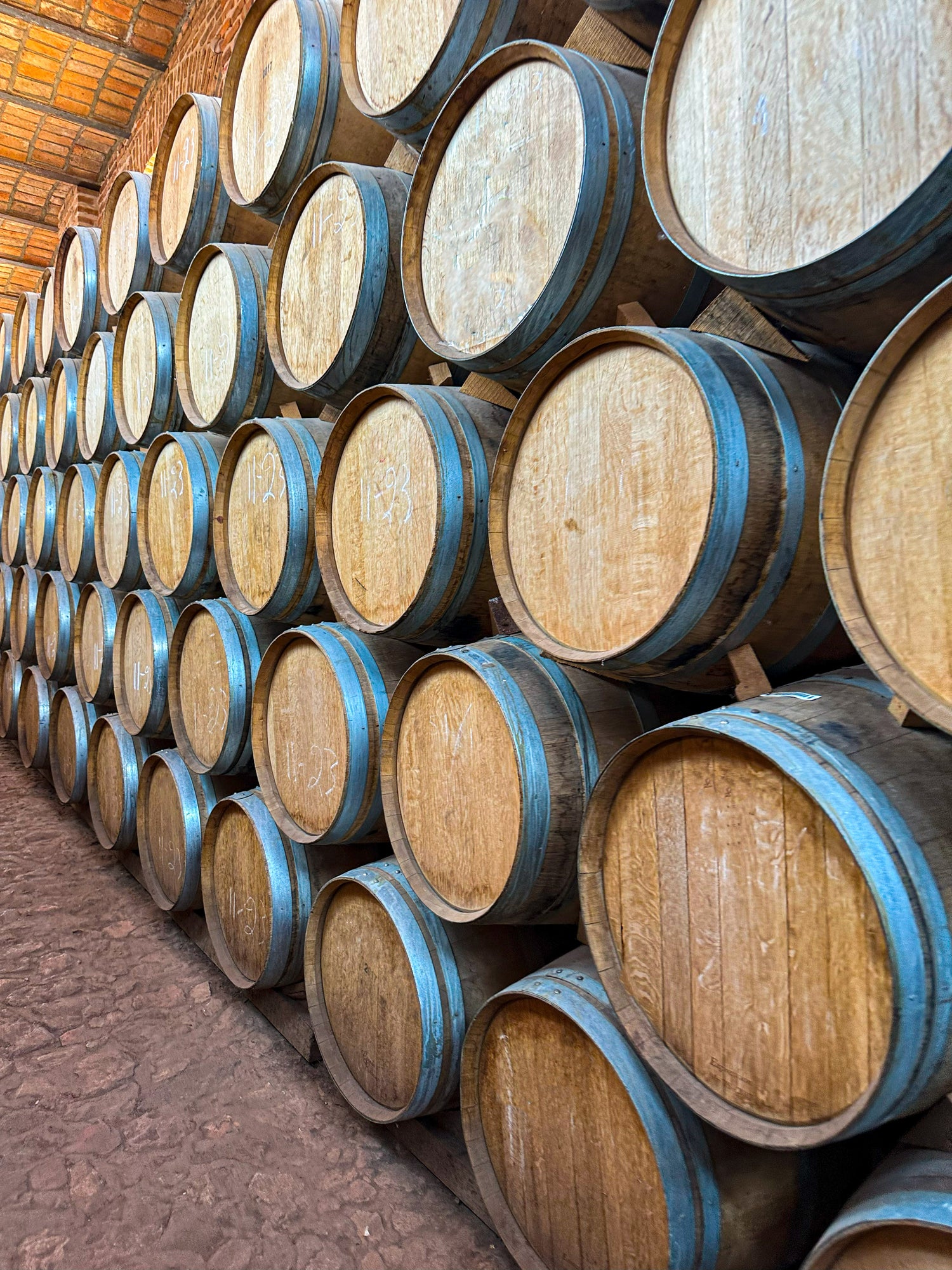
The blanco tequila can be bottled immediately for consumption or it can be transferred to barrels for ageing.
Tequila is most often aged in oak barrels. The barrels can be new or used and the typre of oak often varies.
The barrels not only add color to the tequila, but also a variety of flavors. Components of the wood lend notes of vanilla, caramel, spice and woody flavors.
Used barrels often held other spirits such as bourbon, wine or cognac which can impart additional unique flavors into the tequila.
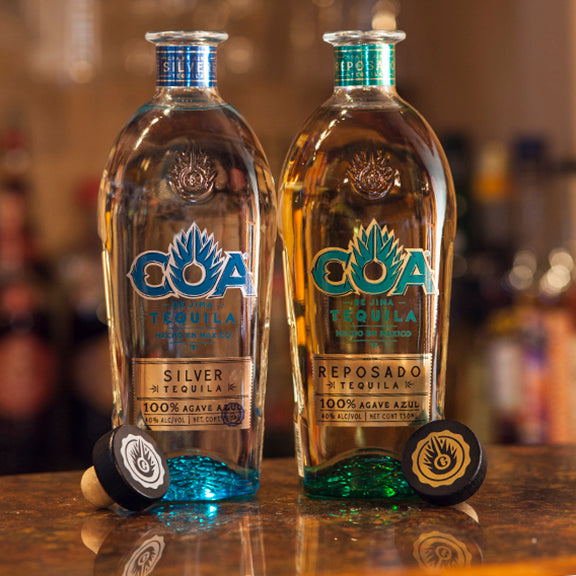
Tequila is named and categorized based on its aging time.
Blanco or Silver: Typically not aged but can be aged for up to 2 months in oak barrels.
Reposado (Rested): Aged for a minimum of 2 months but less than a year. Reposado takes on a light golden hue and a balance between the agave flavors and influence of the oak.
Añejo (Aged): Aged for at least a year but less than 3 years. Añejo tequilas are often darker and deliver more complex, oak-influenced flavors such as vanilla, caramel and spice.
Extra Añejo (Extra Aged): Aged for for a minimum of 3 years, extra añejo tequilas are the darkest and most complex flavor profiles often resembling fine aged cognac or whiskey.
